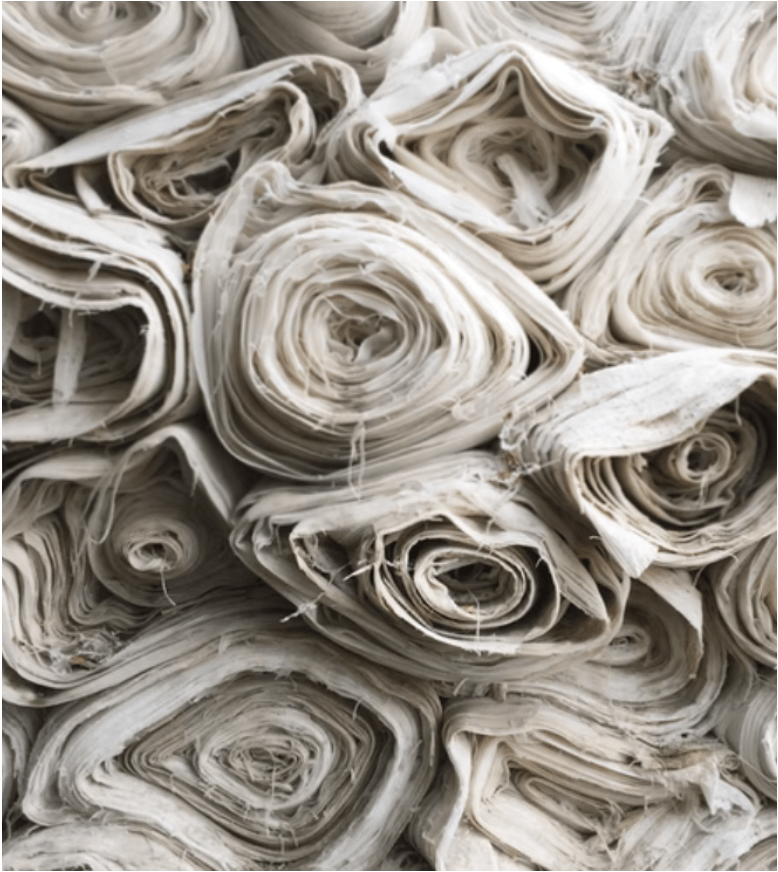What Is PTFE Fabric?
PTFE fabric is not made from plastic, but a synthetic polymer material is known as polytetrafluorethylene (PTFE). PTFE fabric is a type of synthetic fiber used for various applications, including cooking, stain and odor resistance, and a variety of food packaging.
PTFE fabric is also used for various medical applications, such as catheters, wound dressings, and medical gloves because it is non-allergenic and is resistant to heat and chemicals. PTFE fabric is also used when the material must be strong, wear-resistant, and highly flexible.
How Is PTFE Fabric Made?
PTFE is made by polymerization, which involves combining small molecules called monomers to form larger molecules called polymers. In the case of PTFE, the monomer is tetrafluoroethylene, and the polymer is polytetrafluoroethylene.
The polymerization process can be carried out in two ways: free-radical polymerization or addition polymerization. In free-radical polymerization, the monomers are combined in the presence of a catalyst, and the resulting polymer is a random chain of molecules. In addition to polymerization, the monomers are combined in the presence of a catalyst, and the resulting polymer is a linear chain of molecules.
Either free-radical polymerization or addition polymerization can make PTFE, but most PTFE is made by addition polymerization.
How Is PTFE Fabric Used?
PTFE fabric, also known as Teflon fabric, is a synthetic fabric resistant to water, oil, and stains. It is often used in manufacturing and other industries because of its durability and resistance to chemicals. It is used to make Teflon®’s non-stick pans and cookware, which millions of people use every day to prepare food. PTFE is also used to make many other products, such as protective clothing and gloves, medical devices, and even the plastic wrapping used for food products.
PTFE fabric is a layer of PTFE bonded to the fabric material. PTFE fabric is a material commonly used to make high-quality textiles and films. It is often used to make porous gas implants and artificial joints, as it is a very good material for keeping soft tissue moist. It has other uses, such as making shower curtains and insulation, and is even used to line the walls of homes to keep them warm.
PTFE is also used to coat other fabrics, such as polyester and nylon, to make them resistant to bacteria, mold, and mildew. This resistive nature makes PTFE fabric an excellent material for use in healthcare, where the materials used mustn’t allow contamination to avoid the spread of harmful germs and bacteria.
PTFE fabric is commonly used in aerospace engineering for a variety of applications. It is frequently used as an insulator in electrical systems, as it has a very low dielectric constant. This makes it ideal for applications where electrical insulation is required, such as in aircraft wiring, and the ptfe products are widely used in fuel lines and tanks, as it is resistant to both fuel and oils.
One of the most common PTFE fabrics uses a non-stick surface. PTFE is also used in rainwear, as it is waterproof and breathable. It is also used in various other consumer products, such as carpeting, upholstery, car airbags, fire extinguishers, brake pads, clothing, and convenience store safe items to provide extra protection.
Different types of PTFE fabric
PTFE fiberglass
PTFE fiberglass is a high-performance composite material that combines the properties of both PTFE (polytetrafluoroethylene) and fiberglass. It is an ideal material for applications that require excellent chemical resistance, high-temperature resistance, and low friction. PTFE fiberglass is often used in the food and chemical industries and in many high-tech applications. PTFE fabric glass is popular for making medical devices such as artificial joints. It has high tensile strength and low friction.
PTFE Coated Garments
PTFE (polytetrafluoroethylene) coated garments are an emerging technology used in extreme environments. PTFE is a material with incredible durability, washability, and resistance to most chemicals. PTFE-coated garments offer a range of benefits over traditional fabrics and textiles, including improved protection from the elements, reduced moisture build-up, and enhanced comfort. The main applications for PTFE-coated garments are military and outdoor applications. Its resistance to most chemicals and its ability to keep the wearer warm in cold environments make it an ideal material for protective clothing.
ePTFE
ePTFE (expanded polytetrafluoroethylene) is a fluoropolymer usually made of a blend of tetrafluoroethylene (TFE) and perfluoropolyether (PFPE). It is extremely durable and resistant to the chemicals found in most common detergents. It is also popular in environments where the temperature and pressure are particularly harsh.
In the past, ePTFE was a specialized material. It was used for medical and food applications and was the first synthetic material for tubing. However, ePTFE has been used for a wide range of other applications, including in the automotive and truck industries.
GORE-TEX
GORE-TEX is a registered trademark of W.L.Gore & Associates. GORE-TEX is a durable, water-repellent, abrasion-resistant material that feels like a fabric. It is a super durable material resistant to tears, abrasion, and stains.
It is often used for outerwear such as jackets and pants and used in other applications such as intents, boats, and other outdoor equipment. Due to its high viscoelastic nature and heat resistance, it is often used to manufacture kid-friendly products like the safest infant car seat for extra protection.

